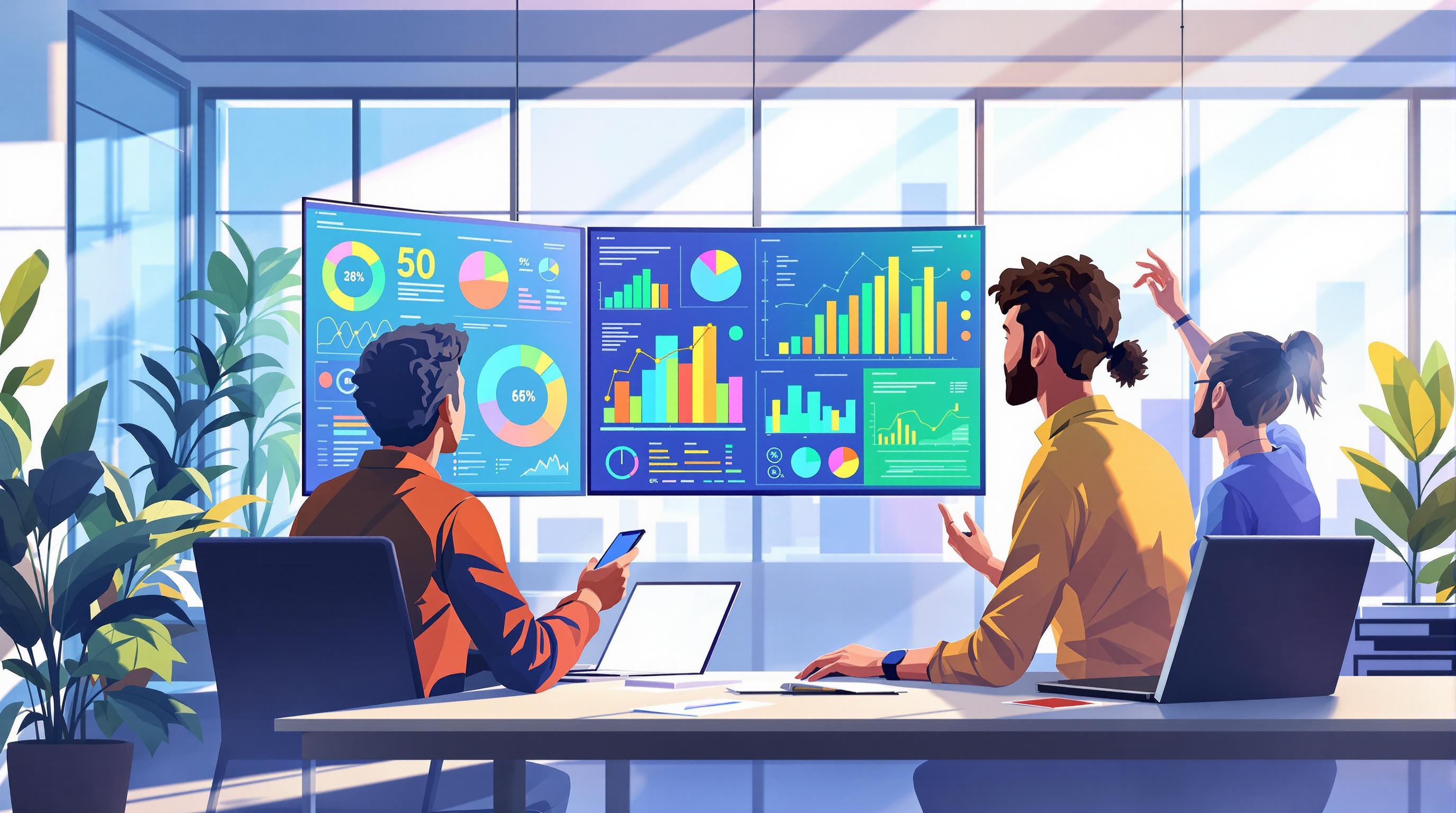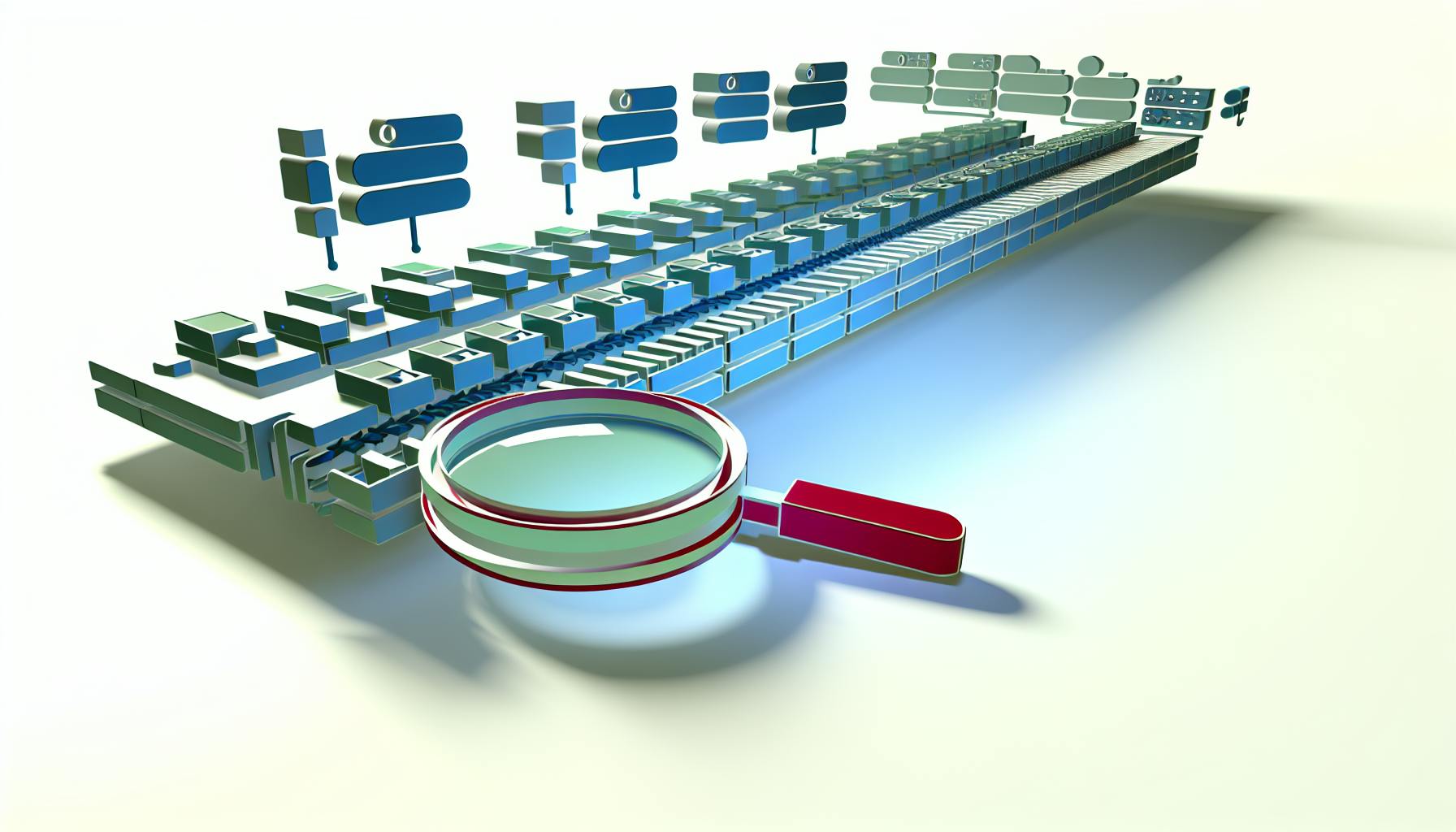Adaptive MFA and Traditional MFA are two approaches to multi-factor authentication:
- Traditional MFA: Same security steps every login
- Adaptive MFA: Security changes based on risk
Key differences:
| Feature | Traditional MFA | Adaptive MFA |
|---|---|---|
| Security | Fixed | Risk-based |
| User experience | Consistent | Varies |
| Flexibility | Limited | High |
| Setup | Simpler | More complex |
Adaptive MFA excels in:
- Large enterprises
- Finance
- Healthcare
- E-commerce
It offers stronger security and better user experience, but comes with higher setup costs and complexity.
Choose based on your:
- Security needs
- User requirements
- Budget
- IT capabilities
The future of MFA includes AI, advanced biometrics, and continuous authentication.
Related video from YouTube
What is Traditional MFA?
Traditional Multi-Factor Authentication (MFA) is like having multiple locks on your front door. It adds extra security layers beyond just passwords.
Basic Concepts
MFA requires users to prove their identity in at least two ways:
- Something you know (password)
- Something you have (phone)
- Something you are (fingerprint)
Types of Authentication
Common MFA methods:
| Method | Description | Example |
|---|---|---|
| Knowledge-based | You know it | Password, PIN |
| Possession-based | You have it | SMS code, email token |
| Biometric | You are it | Fingerprint, face scan |
How It Works
A typical MFA login:
- Enter username and password
- Get a one-time code on your phone
- Type in the code
- You're in!
This happens every time you log in, no matter what.
Pros of Traditional MFA
MFA is a security powerhouse:
- Stops hackers even if they crack your password
- Widely available and easy to implement
- People are getting used to it
"MFA can block over 99.9 percent of account compromise attacks." - Microsoft
That's why so many organizations use it.
What is Adaptive MFA?
Adaptive MFA is like a smart bouncer for your digital accounts. It changes the security checks based on your situation.
How It Works
Adaptive MFA looks at:
- Your location
- Your device
- The time
- What you're doing
It compares this to what it knows about you:
- Where you usually log in
- Your devices
- Your job
Risk Checks
Every login gets a quick risk check:
| Factor | Safe | Risky |
|---|---|---|
| Where | Your office | A new country |
| Device | Your phone | Unknown laptop |
| When | Work hours | Middle of the night |
| What | Reading email | Moving money |
Changing Security Levels
The system adjusts based on risk:
- Low risk? Just a password.
- Medium risk? Password and fingerprint.
- High risk? Password, phone code, and face scan.
For example:
Mike logs in at work? Just a password.
Mike logs in at 2 AM from a new device? Password plus phone code.
This smart approach keeps things secure without annoying users. That's why it's catching on in big companies, banks, and healthcare.
Adaptive vs. Traditional MFA: Key Differences
Traditional MFA is like a bouncer who always asks for two IDs. Adaptive MFA? It's more like a smart doorman who recognizes regulars but gets suspicious when something's off.
Login Process
Traditional MFA: Same steps, every time, for everyone. Adaptive MFA: Changes based on the situation.
Example:
- Traditional: Always password + phone code.
- Adaptive: Maybe just a password from your usual spot, but extra steps from a new location.
User Experience
Traditional MFA can be a drag. Same routine, every login.
Adaptive MFA aims to smooth things out. Only bugs you when needed.
| Aspect | Traditional MFA | Adaptive MFA |
|---|---|---|
| Login steps | Fixed | Risk-based |
| User friction | Often high | Lower when trusted |
| Flexibility | One-size-fits-all | Adjusts to behavior |
Security Strength
Both boost security, but differently:
- Traditional MFA: A strong, always-there lock.
- Adaptive MFA: A guard that changes tactics.
Adaptive MFA might have an edge. It can spot odd situations, like logins from countries you've never visited.
Ability to Change
Adaptive MFA's strong suit. It can switch things up on the fly.
- Traditional MFA: A fixed recipe.
- Adaptive MFA: A chef who tweaks based on what's fresh.
Setup Difficulty
Traditional MFA: Straightforward. Pick your extra steps, done.
Adaptive MFA: Trickier. Needs more initial work to set "normal" baselines.
For IT:
- Traditional: Set and forget.
- Adaptive: More upfront work, but potential long-term payoff in security and user satisfaction.
Benefits of Adaptive MFA
Adaptive MFA packs a punch when it comes to security and user satisfaction. Here's why it's a game-changer:
Stronger Security
Adaptive MFA is like a security guard that pays attention to everything. It looks at:
- What device you're using
- Where you're logging in from
- How you usually behave online
- Your login habits
This helps catch bad guys in the act. Check this out:
Akamai says more than 40% of global login attempts are actually attacks.
Adaptive MFA fights back by adding extra checks when things look fishy.
Better User Experience
Unlike old-school MFA that always makes you jump through hoops, adaptive MFA changes things up:
- Trusted users get fewer steps
- Normal use is smoother
- Extra security only kicks in when needed
| Old MFA | Adaptive MFA |
|---|---|
| Same old, same old | Adapts to risk |
| Can be a pain | Easier for regulars |
| One-size-fits-all | Tailored approach |
Easier Access for Low-Risk Situations
When things look safe, adaptive MFA takes it easy:
- Logging in from your work computer? Maybe just a password.
- Using a less important app? Fewer hoops to jump through.
It keeps things simple when it can, without leaving the door open for trouble.
Handling New Threats
As hackers get craftier, adaptive MFA keeps up:
- Spots new attack tricks
- Updates its risk radar in real-time
- Adds extra steps when something's off
This flexibility helps companies stay ahead of the bad guys without constantly overhauling their systems.
sbb-itb-9890dba
Drawbacks of Adaptive MFA
Adaptive MFA isn't all sunshine and rainbows. Let's dive into some key drawbacks:
It's a Pain to Set Up
Setting up Adaptive MFA? Not exactly a walk in the park. Companies often run into:
- Tricky configuration processes
- Time-sucking user data syncs
- Headaches integrating with current systems
Take Okta Adaptive MFA, for instance. Some organizations have spent weeks (or even months!) just getting directories set up and user data synced. Ouch.
Sometimes It Gets It Wrong
Adaptive MFA isn't perfect. It can make mistakes about who should get in:
- Locking out people who should have access
- Letting in folks who shouldn't
Why? The system uses complex algorithms and context clues. And sometimes, those aren't spot-on.
Privacy? What Privacy?
To work well, Adaptive MFA needs a TON of data:
| Data Type | What It Tracks |
|---|---|
| Location | Where you are |
| Device info | What you're using |
| Behavior | What you're doing online |
Some users get squirmy about all this data collection. And let's face it, there's always a chance this info could end up in the wrong hands.
Playing Nice with Other Systems
Getting Adaptive MFA to work with existing IT setups can be a real headache:
- Old software might throw a fit
- IT teams get swamped with extra work
- Daily operations can hit speed bumps
Some users have reported slower load times and issues with credential recognition. Not exactly a recipe for a smooth workday.
Where Adaptive MFA Works Best
Adaptive MFA excels in industries needing top security without slowing down. Here's where it's making an impact:
Big Companies
Large corporations use Adaptive MFA to protect sensitive data smartly. La-Z-Boy, for instance, implemented a zero-trust setup with MFA for company and personal devices. This helped them fight cyber attacks without hassling their staff.
Banks and Finance
In finance, Adaptive MFA is crucial:
| Benefit | Impact |
|---|---|
| Meets regulations | Satisfies auditors |
| Protects transactions | Stops fraud |
| Adapts to risk | Extra checks for high-risk actions |
With financial service attacks up 67% in H1 2024, Adaptive MFA is vital.
Healthcare
Adaptive MFA protects patient data while helping healthcare pros work efficiently and comply with HIPAA rules.
"Adaptive MFA allows healthcare workers to work more seamlessly while complying with security regulations such as HIPAA to protect patients' personally identifiable information (PII)."
This balance is key in fast-paced medical settings.
Online Stores
E-commerce giants use Adaptive MFA to keep shopping simple and safe:
- Quick login for low-risk situations
- Extra checks for high-risk actions like adding payment methods
Room & Board uses Cisco Duo for MFA, providing strong security without annoying customers.
In these sectors, Adaptive MFA ramps up security when needed and stays invisible when it's not. That's the smart approach businesses and users appreciate.
Picking Between Adaptive and Traditional MFA
Choosing MFA isn't a walk in the park. Let's break it down:
What Matters
When deciding between Adaptive and Traditional MFA, think about:
- How much security you need
- Impact on your team's workflow
- Ability to handle different scenarios
- Time and effort for setup and upkeep
Check Your Company's Needs
To figure out what you really need:
1. Look at your current setup
What's already in place? Is it doing the job?
2. Know your industry rules
Some fields have tough security requirements. Make sure your MFA fits.
3. Understand your users
Who needs access to what? How tech-savvy are they?
4. Identify your biggest risks
What keeps you up at night? Data breaches? Account takeovers?
Weighing Costs and Benefits
Here's a quick comparison:
| Factor | Traditional MFA | Adaptive MFA |
|---|---|---|
| Setup cost | Lower | Higher |
| Ongoing costs | Lower | Can be higher |
| User friction | Higher | Lower |
| Security strength | Good | Better |
| Flexibility | Limited | High |
Adaptive MFA might hit your wallet harder at first, but it can pay off by:
- Cutting down IT support calls
- Reducing data breach risks
- Boosting employee productivity
For instance, a big retail company saw 30% fewer password reset requests in just one month after switching to Adaptive MFA.
Don't just look at the price tag. Think about the long-term value.
What's Next for MFA
MFA is changing fast. Here's what's coming:
AI and Machine Learning
AI is making MFA smarter:
- AI spots weird logins instantly
- Machine learning customizes MFA for each user
Microsoft's Azure AD uses AI to cut false alarms by 60% while boosting security.
New Biometric Tech
Biometrics are getting fancier:
| Type | How It Works | Benefit |
|---|---|---|
| Facial Recognition | Scans your face | Quick, no hands |
| Fingerprint Scanning | Reads your fingerprint | Hard to fake |
| Voice Recognition | Analyzes your voice | Great for phone banking |
The biometric auth market? It's booming. Set to hit $76.37 billion by 2027, growing 19.1% yearly.
Always-On Security Checks
MFA isn't just for logins anymore:
- It checks your identity throughout your session
- It even tracks how you type or move your mouse
By 2024, Gartner says 60% of big companies will use passwordless MFA for over half their systems.
These changes mean better security that's easier to use. But they also bring up privacy concerns. Companies need to balance security and user trust as they roll out these new MFA methods.
Wrap-Up
Choosing between Adaptive MFA and Traditional MFA is a big deal as cyber threats get nastier. Here's the quick breakdown:
| Feature | Adaptive MFA | Traditional MFA |
|---|---|---|
| Security | Risk-based | Always the same |
| User Experience | Easier when risk is low | Same steps every time |
| Flexibility | Adapts to new threats | Stays put |
| Setup | Trickier | Easier |
Adaptive MFA is hot in risky industries. A big U.S. bank saw 40% fewer fraud attempts after switching in March 2023. The system caught weird login patterns and asked for extra proof, stopping potential break-ins.
It's not just for the big guys. Small businesses want in too. Okta found that 65% of companies under 100 employees plan to use Adaptive MFA by 2025.
Why? Cyber attacks are getting too smart. In 2022, ransomware alone cost businesses $20 billion. Traditional MFA can't keep up.
Bottom line: If you deal with sensitive data or face changing threats, take a hard look at Adaptive MFA. It's tougher on bad guys without driving your users crazy.
Think about:
- How much risk you're dealing with
- What your users need
- The time and money it'll take to set up
Adaptive MFA is probably the future as we ditch passwords. For now, pick what fits your security needs and budget best.
FAQs
What's the difference between MFA and adaptive MFA?
Traditional MFA is like a one-size-fits-all security blanket. Adaptive MFA? It's more like a smart thermostat for your security.
| Feature | Traditional MFA | Adaptive MFA |
|---|---|---|
| Risk Assessment | Login only | Always on |
| Authentication Steps | Fixed | Flexible |
| User Experience | Consistent | Smarter |
| Security Level | Static | Dynamic |
Adaptive MFA keeps its eyes peeled even after you've logged in. It's always ready to turn up the heat when things look sketchy.
Got an example of adaptive MFA in action?
Picture this: You're working from home.
1. You log in from your couch. Your laptop, your Wi-Fi.
System says: "Cool, just need your password and a quick fingerprint scan."
2. Later, you try to peek at some top-secret stuff from a coffee shop.
System goes: "Whoa there! Let's get an extra code from your phone, just to be sure."
3. It's midnight, and you're suddenly moving tons of data.
System freaks out: "Hold up! We're gonna need your boss to okay this."
It's like a bouncer who can tell the difference between a regular and someone who's up to no good.
What makes adaptive MFA so great?
Two big wins:
- It's like a security ninja: Tough when it needs to be, invisible when it doesn't. You get Fort Knox-level protection without the hassle.
- It's always learning: As the bad guys come up with new tricks, adaptive MFA adapts. Old-school MFA? It's stuck in its ways.
Plus, it plays nice with single sign-on and helps keep the compliance folks happy. Not too shabby, right?



